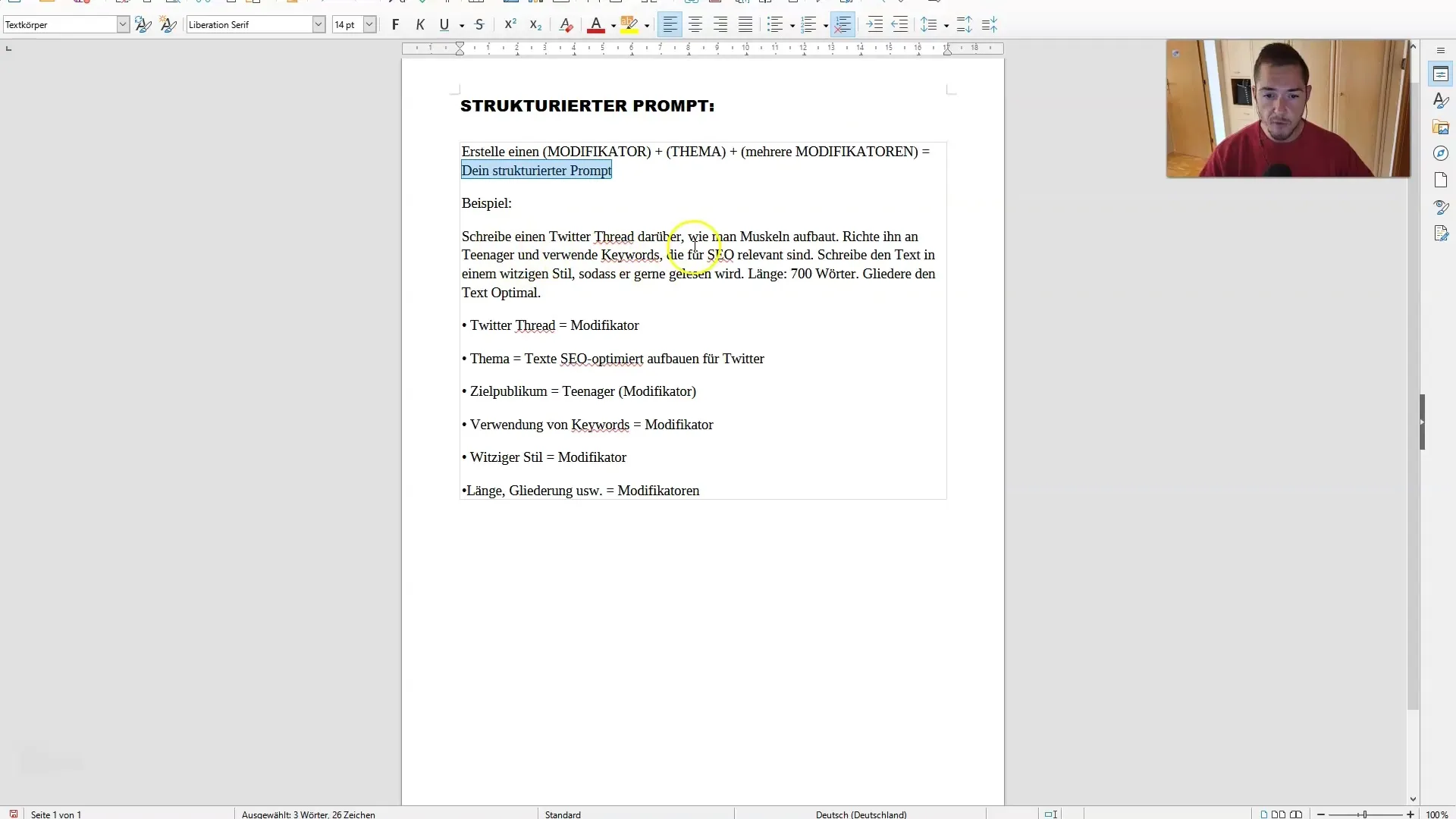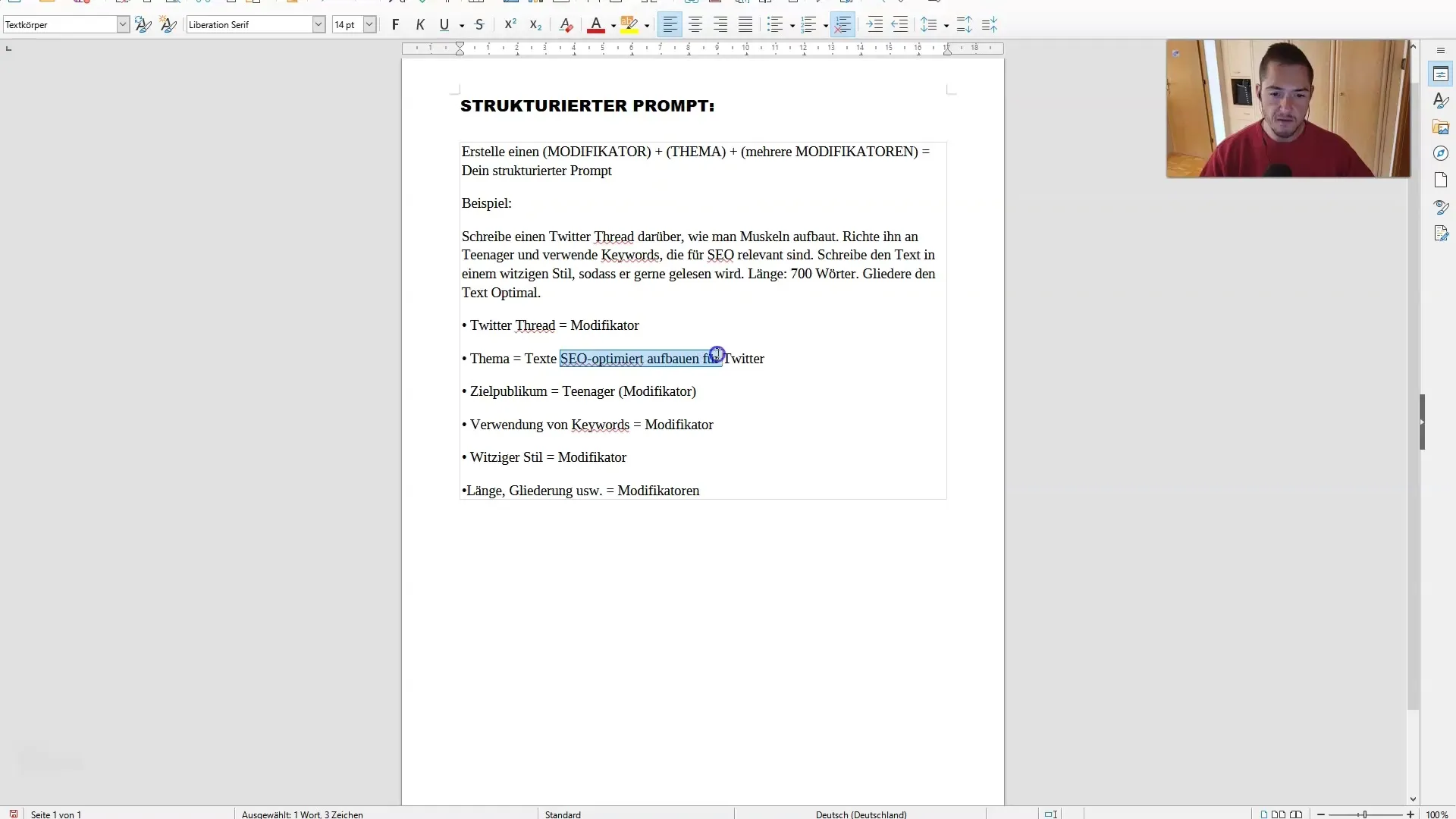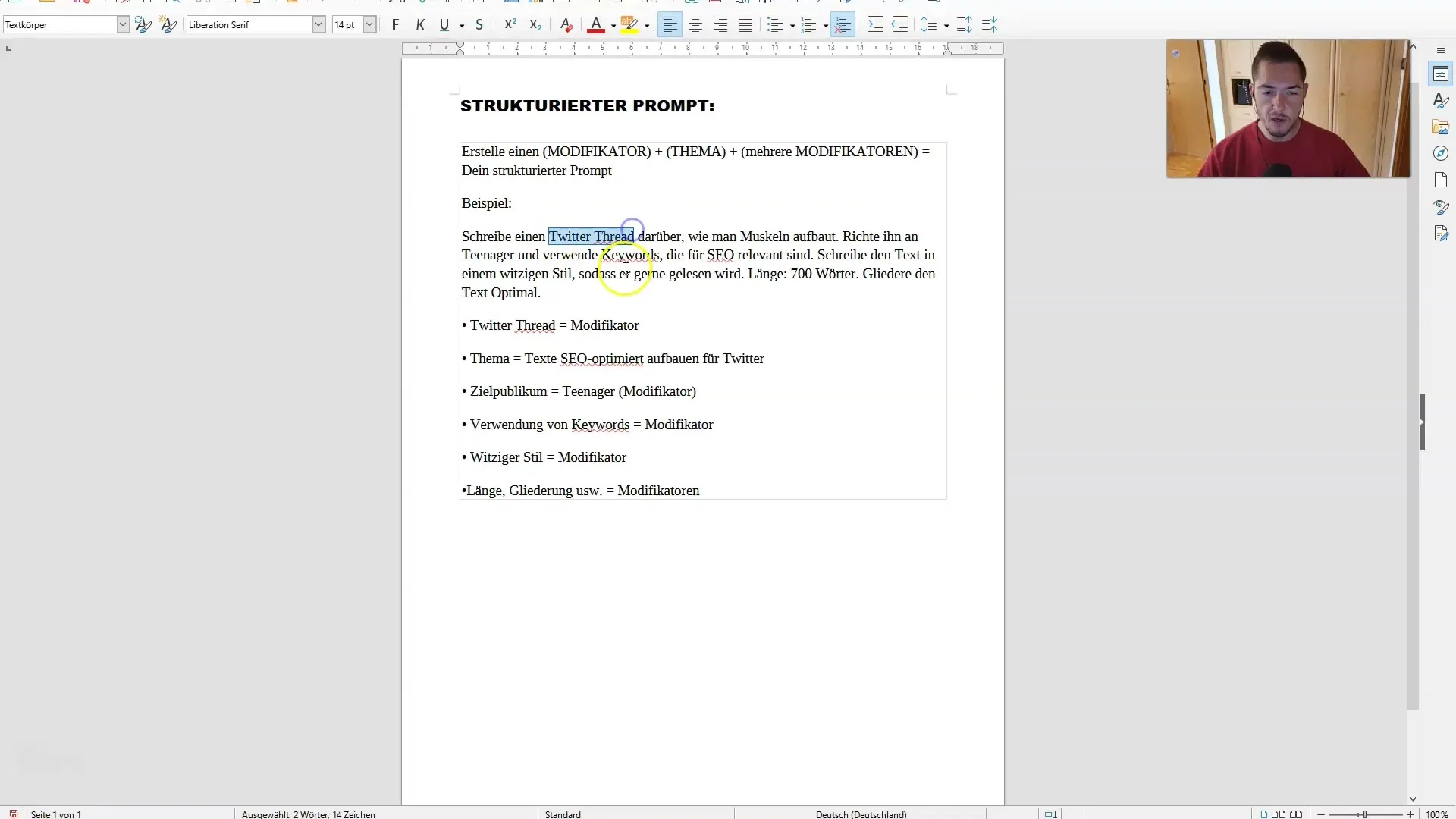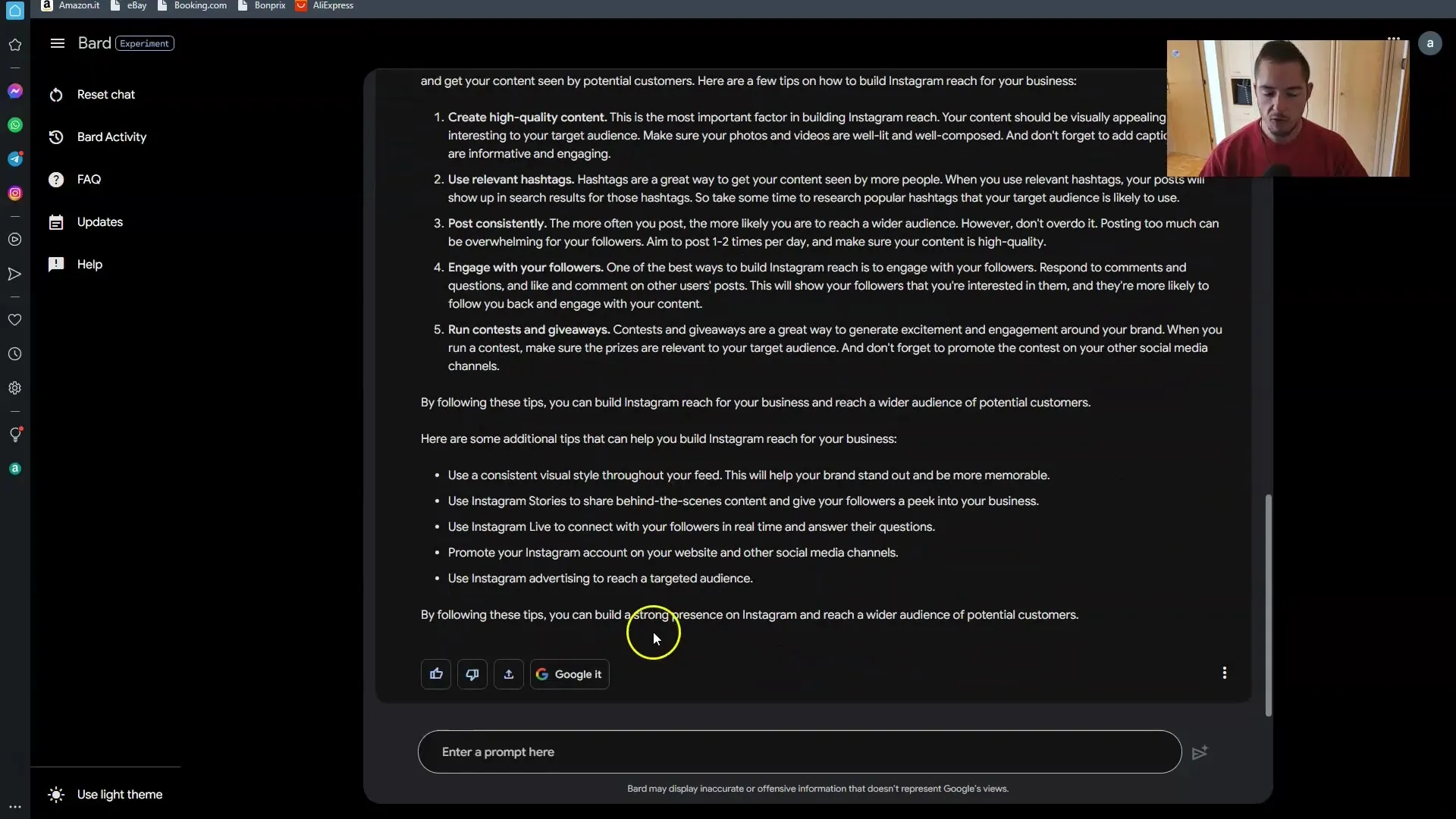In this guide, you will learn what a structured prompt is, how you can design it, and what advantages result from it. We will look at some basic elements that you can incorporate into your own prompts to achieve better results with Google Bard. I will show you step by step how to apply this technique and provide some practical examples.
Key Insights
- Structured prompts are more effective than unstructured prompts.
- They consist of modifiers and themes that help improve the quality of the generated content.
- By considering modifiers such as the target audience, writing style, length, and structure, you increase the likelihood that Bard will deliver high-quality texts.
- With a clear structured approach, you can tailor the outputs to your specific needs.
Step-by-Step Guide
Understanding an Unstructured Prompt
To understand what a structured prompt is, let's first look at what defines an unstructured prompt. An unstructured prompt is often very vague and does not produce the desired results. A simple example would be "Write an essay." In this case, there are no specific requirements or indications of what you want.
Such an unstructured prompt typically leads to a less satisfactory result because no guidance is provided.
Introduction of Structured Prompts
On the other hand, structured prompts provide clear guidance. Structured prompts use modifiers and themes to formulate specific requirements. An example of a structured prompt would be: "Create a Twitter post about building muscles, target it to teenagers, and use relevant keywords."

Here we can identify various modifiers: the theme (building muscles), the target audience (teenagers), and the humorous writing style. All these elements help Bard generate targeted and relevant texts.
Utilizing Modifiers
Modifiers are crucial to define the context and orientation of your prompt. The more modifiers you include, the more specific the result becomes. You can consider various aspects such as the length of the text, writing style, and structure.

These modifiers enable Bard to create content tailored precisely to your requirements.
Practical Application: Input into Google Bard
Now let's get practical and put this structured prompt into action in Google Bard. You can enter the prompt formulated earlier into Bard and quickly see that the result aligns directly with your topic and is very well-worded. Bard automatically optimizes the text according to the specified modifiers.
In our example, see how the result is engaging, humorous, and suitable for the specified audience.
Adaptation for Specific Content
It is important to adjust your prompt to your specific needs. Instead of creating a Twitter post, you could also write a blog article or a Facebook post. Similarly, you can change the theme and modifiers to generate content on different topics.

An example of this could be: "Write a blog article about building Instagram reach, target it to businesses, and write in a serious style."
Optimizing Outputs
Once Bard's initial draft is generated, you can specifically request improvements or add more modifiers. You can further optimize the result by asking specific questions, such as about the keywords used or the structure.

This flexibility allows you to optimize Bard's outputs for your project.
Effective use of Google Bard – Conclusion
With a structured prompt, you can significantly enhance the results from Google Bard. By using modifiers and clear themes, you can generate high-quality content tailored specifically to your needs.
Summary
With this guide, you have gained a comprehensive overview of structured prompts. You now know that these prompts are more helpful than unstructured ones, and that with modifiers you can significantly improve the quality and relevance of the generated content. Your next challenge is to apply these techniques in practice and customize them to the topics you desire.
Frequently Asked Questions
How do you define a structured prompt?A structured prompt contains specific requirements and modifiers that work to generate high-quality texts.
What are modifiers?Modifiers are specific instructions that affect aspects such as target audience, writing style, length, and structure.
Is it necessary to use many modifiers?The more modifiers you insert, the more accurate and targeted the result will be.
How can I customize the texts generated by Bard?You can ask targeted questions or add additional modifiers to improve the quality of the result.
Could I also make simple requests to Bard?Yes, you can make simple requests, but the results are likely to be less specific.


